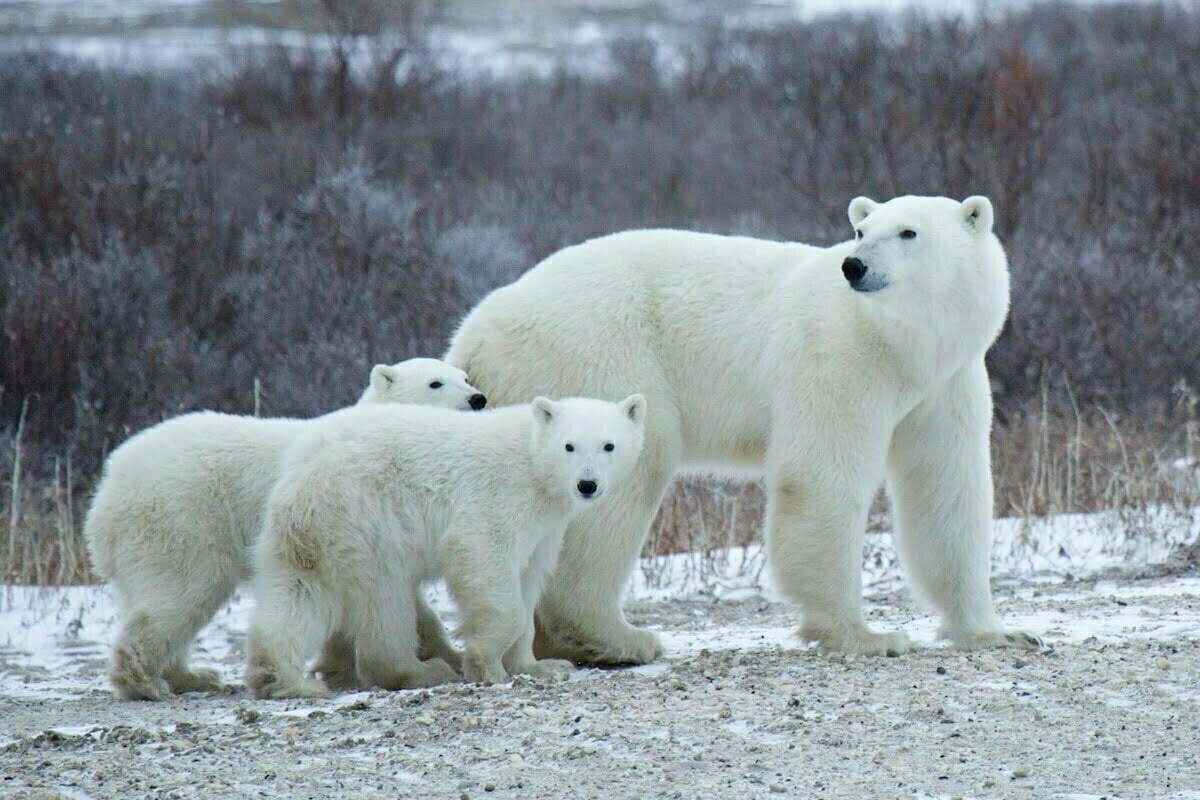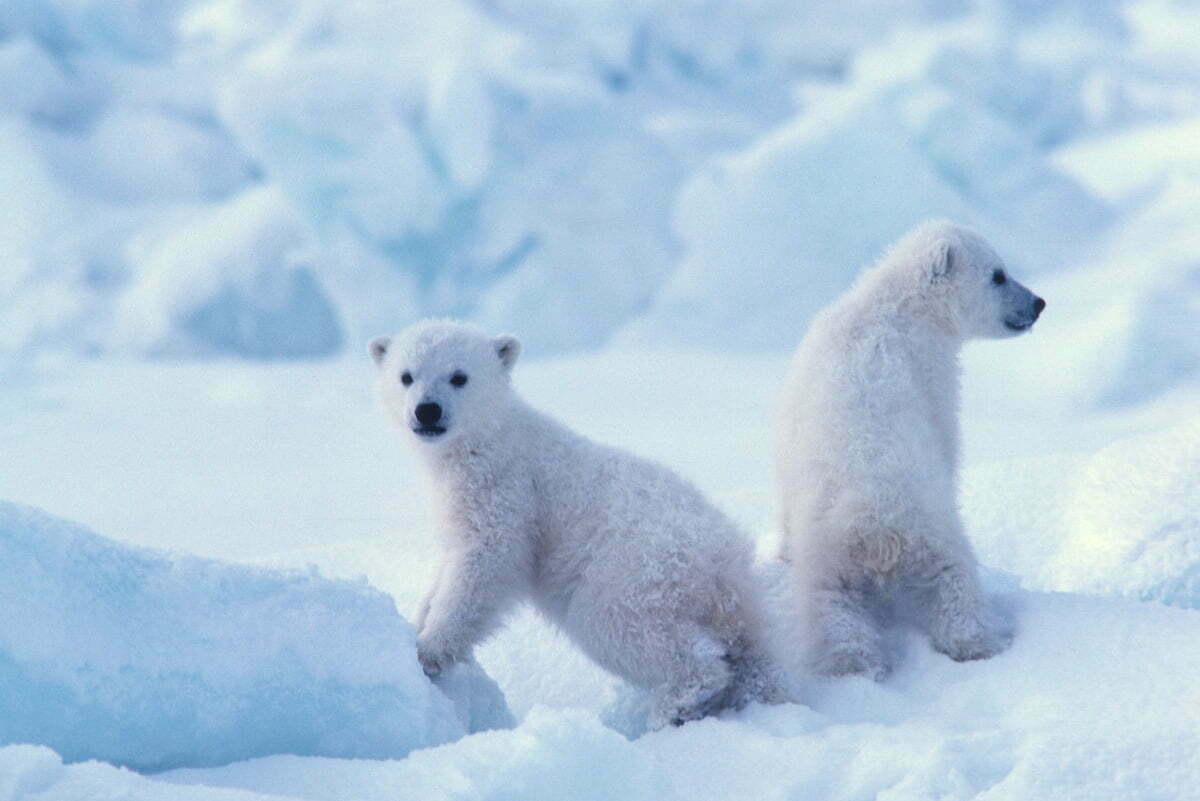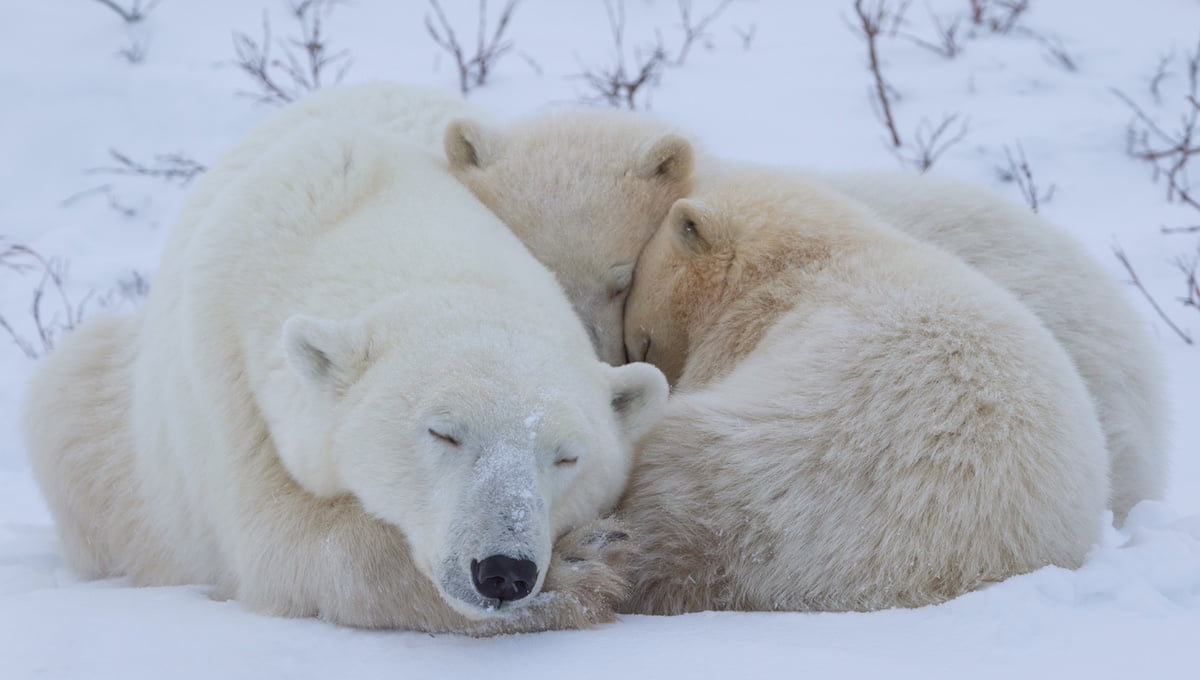Polar Bears, a Beacon of Hope
Guest Post By Krista Wright, Executive Director at Polar Bears International
It’s February 2021, polar bear moms and cubs are nestled in their dens, and the hope I feel for their future is palpable. Events over the last year disrupted many global systems, upending life as we know it. As we begin to recover and rebuild, we find ourselves in a unique position to reimagine what comes next. A future with polar bears, a stable climate, and an equitable society is possible—and there has never been a more important time to come together in realizing this vision.
This year, the focus of our International Polar Bear Day celebration is on how we can protect vulnerable families in their dens, keeping them out of harm’s way. Polar bear cubs are born in winter in dens hidden under the snow. Surviving an Arctic winter is no small feat, and denning is the most vulnerable time in a polar bear’s life cycle, with survival rates of just 50 percent or less for many cubs. Research shows that the oil industry’s current den-detection tool misses more than half of known dens, putting denning families at risk.
While we work to address climate change it is critically important that we protect denning moms and cubs as well—ensuring healthy populations of polar bears into the future. We encourage people to take part in our Protect Moms and Cubs Challenge — the donations will help Polar Bears International develop promising new technology, Synthetic Aperture Radar (SAR), to find and map den locations to make sure moms and cubs aren’t disturbed. By protecting dens, you’ll protect cubs, helping to ensure their future.
Want to know more about the cubs you’ll be helping? Here are my favorite mom and cub facts:
- Female polar bears begin new families about every three years. From about the age of five years old, female polar bears mate and produce cubs approximately every three years depending on multiple factors. If female bears reproduce consistently until their late 20s, that’s more than eight litters of cubs at one to three cubs each. One female polar bear could potentially produce over a dozen cubs in her lifetime, though not all cubs will make it into adulthood or reproduce themselves.

- Polar bear moms have one of the longest fasting periods in the animal kingdom. After feeding all winter, polar bears in seasonal ice areas like Hudson Bay come ashore in the summer. Females who mated in the spring and are fat enough to sustain a pregnancy build and enter a maternity den in the fall, which is soon hidden under drifts of snow. While in the den, the mother bears don’t eat or drink. Instead, they live off their body fat. In the late fall or early winter, they give birth to one to three tiny and helpless cubs, nursing them until they are strong enough to leave the den three to four months later. The denning period is considered the most vulnerable time in a polar bear’s life. Once the cubs are strong enough to withstand the rigors of the Arctic outside the den, the family will head to the sea ice to hunt seals.

- Polar bears are marine mammals. They don’t prefer sea ice to land, they need sea ice to survive. For this reason, melting sea ice due to climate change is the biggest threat to polar bears. If global warming continues on the trajectory it’s now following, most polar bears could disappear by 2100.

- Cubs have to learn all about being a polar bear in just over two years. Cubs stay with their moms for just over two years, learning as much as possible including how to navigate sea ice, when and where to migrate, how to hunt seals, how to avoid danger, and how to use their innate curiosity to learn new things. Young cubs listen very well to their mothers, sometimes even mimicking mom’s movements exactly. When cubs are weaned, they are considered subadults (from 2.3 years to 5 years old) and have to put their newly acquired skills to the test.

- Polar bear paws are expertly designed for traversing the slick and shifting sea-scape. A polar bear’s paws measure up to 30 centimeters (11.81 inches) across, to help polar bears tread on thin ice. When the ice is very thin, the bears extend their legs far apart and lower their bodies to distribute their weight. Black footpads on the bottom of each polar bear paw are covered by small, soft bumps known as papillae. Papillae grip the ice and keep the bear from slipping. Tufts of fur between its toes and footpads can help with security as well.

- Polar bear milk is the fattest of any land mammal’s milk. Polar bear milk is about 31% fat when cubs are born, providing enough calories to help cubs grow rapidly. The mother’s milk changes fat content and composition as cubs get older and nurse less, becoming closer to 18% fat by the time the cubs are a year old. Although polar bear moms may nurse cubs through their second birthday, some females wean their cubs sometime after their first birthday. It may depend on the body condition of the mother—nursing cubs is extremely costly from an energy standpoint.

- Polar bear fur is not actually white. Each hair shaft is pigment-free and transparent with a hollow core that scatters and reflects visible light, much like what happens with ice and snow. Polar bears look their whitest when they are clean and in high-angle sunlight, especially just after the molt period in spring/summer. Before molting, oil buildup in their fur from snacking on seals can make them look yellow.

While International Polar Bear Day only lasts 24 hours, our care and thirst for knowledge on how to keep these magnificent creatures continues on. Together, we can do so much for polar bears, including at-risk moms and cubs—and we’re deeply grateful to you, on Polar Bear Day and every day.
You can learn more about Polar Bears International on our site, or follow us on Twitter, Facebook, or Instagram.










